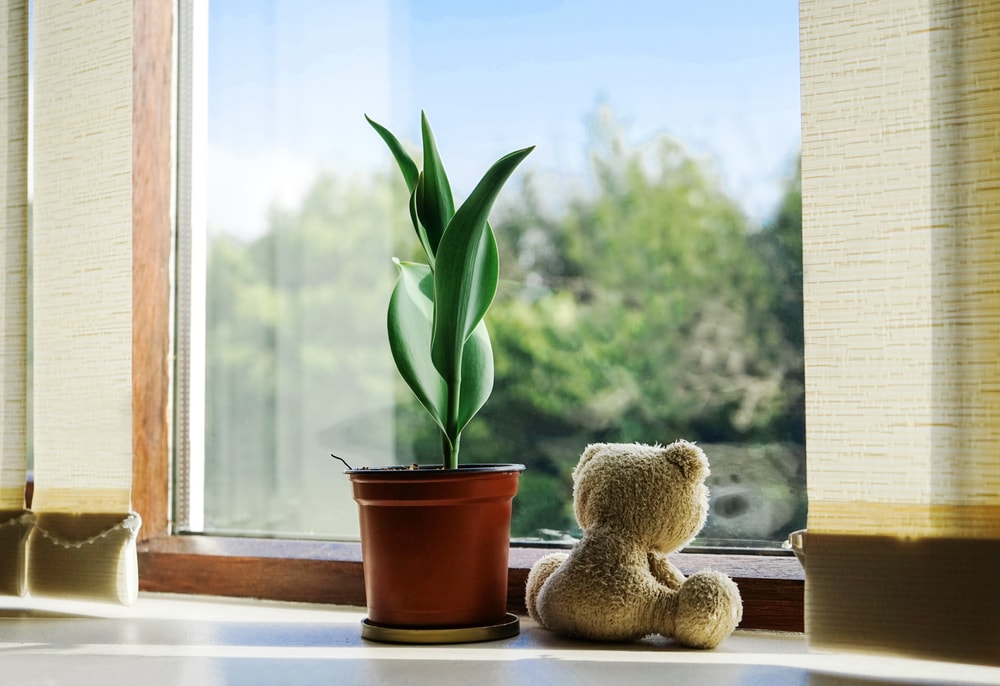Ah, May. All danger of frost is past—mostly. Although we have had a frost as late as May 10th here (it was a LONG time ago), we’re pretty safe in considering ourselves out of the woods now. And I’m proving it by moving my orchids, citrus, and other houseplants outside for the summer.
Here’s How to do it Safely
In the 36 years I’ve been with the Great Big Greenhouse, do you know how many customers I’ve seen bring in leaves or pictures of leaves with either bleached patches or brown patches on them the end of May? It’s sunscald or sunburn caused by putting indoor plants out into the direct sun.
Remember, even the plants in the sunniest windows inside have had a ceiling overhead—so they have been getting NO direct overhead sunlight. Putting them directly out in the overhead sun, well, it’s a bit like going to the beach for a weekend in May—without sunscreen. Even my sun-loving houseplants—like citrus and succulents—will go outside into mostly shade for a few days before I begin to inch them into more sun. My moderate/medium light plants will go into the dappled shade under trees and STAY THERE.
All My Plants are Outside. Now What?
So all your plants are outside for the summer, you can forget about them, right? Not exactly! Watering needs will change now that they’re in better light, better air circulation, and fluctuating temperatures. Plants respond to the uptake in light by actively growing, so feeding on occasions is a good idea. Just be sure to use the right formulation for your plants.
Most blooming plants, except for orchids, can be fertilized with an African violet food (it is a blossom booster, after all). Orchids should be fed with 20-20-20 half-strength, half as often as the label says. Succulents and cacti should be fertilized with half-strength even numbers like 10-10-10. Palms, ficus, ferns, and other plants are grown for the beauty of their foliage can be fed with regular strength even numbers.
At the beginning of the growing season is a good time to repot a plant—if necessary. How do you know if you need to? If you find a plant is drying out a lot faster than usual, it may be telling you that there just isn’t enough soil to hold moisture for the plant. At that point, you can go up ONE size (about an inch) if necessary. If you’re able to get by with one good watering a week, however, you probably don’t need to repot.
The other exception would be plants that grow sideways—like snake plants. When the new shoots are touching the sides of the pot, they need a little more room—again—about an inch. If they need to be divided, this would also be an ideal time. For more information on repotting (how, when, etc.) check out my February blog To Repot or Not to Repot.
Over the winter indoors, some of your higher light indoor trees (like Ficus and Schefflera) might have gotten a little lean and leggy so now is a good time to do some pruning and shaping, if necessary. On plants like Ficus, Schefflera, and tropical Hibiscus, prune leggy stems to right above a leaf node (a node is where the leaf attaches to the stem). New growth appears from the nodes. For soft-stemmed plants (like philodendron or ivy) you can pinch them back to just above a node.
There are a few plants that should not be pruned. Norfolk Island Pines do NOT branch, so if you cut them back they will begin growing SIDEWAYS. Orchids should never be pruned except by someone experienced with orchids.
When in doubt, you can always call or stop by. That’s what we’re here for.


The Weather Channel has been predicting Friday night will be going down to 34 F. No. Virginia is officially the South, but it’s still in the 30’s several nights in the next 4-5 days. Will be waiting to buy my plants until that threat is gone.
My butterfly bush started to grow green leaves, but then it turned cold again and the leaves died off. The part of the plant that hadn’t started early now has leaves. Will the early green still come back, or it that part dead??
Thanks
Whether or not it’s dead, we’ll have to wait and see. I think that the main stems should be fine, just tender new foliage got nipped. Give it a little time. If you don’t see signs of new leaves by the first of June, then you may want to cut that part back.
And, yes, I’ve kept my peppers and tomatoes, etc. in their pots on the back deck. Something told me Mother Nature wasn’t finished with us yet! Tonight and tomorrow night all I have to do is bring a few trays in.